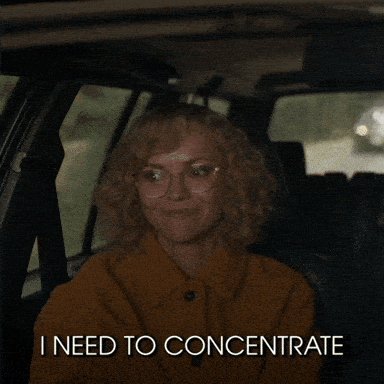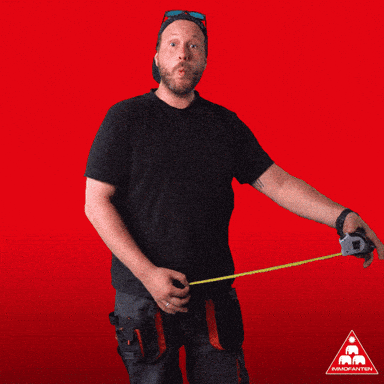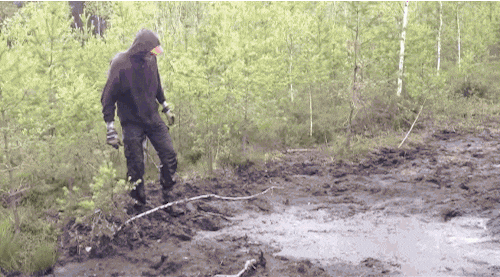I’ll never forget the joy I experienced when, after a half-dozen failed attempts, I finally generated the silhouette I needed of a ballerina to complete a graphic tshirt I was making for the dance niche. Then, it happened.
I noticed my dancer had three legs.
Ah, the joys of generating AI art! Fortunately, these days, I encounter fewer anatomical glitches thanks to perfecting my prompts and giving more specific commands. And I want to share some insights from my experience with you today!
Think of the tips to follow like a well-stocked toolbox for taming the AI beast and training it to produce body parts, animal features, and object shapes you’ll actually want to show off. By blending creativity, attention to detail, and targeted prompts, you’ll curb the risk of bizarre-looking creatures and bring your artistic visions to life as accurately as possible.

1. Specify Your Desired Proportions and Angles Clearly
Why It Matters:
In typical AI image generation, the model tries its best to guess body proportions or object shapes from a general sense of context. If you just say “woman in a forest,” the AI might conjure up something passable, but it could just as easily produce strange distortions because it lacks detailed guidance.
Actionable Prompt Tip:
Tell the AI exactly how you expect the subject to be oriented, which body parts or object details are visible, and how they should connect. Also, clarify the desired expression or stance for people and the orientation for animals or items.
Example Prompt:
“Create a realistic illustration of a 30-year-old female runner in mid-stride, facing the left side of the frame. Her arms should be pumping naturally, and each hand should have five visible fingers. She should appear proportionate, with legs bent at the knees and no distortions to her torso or limbs.”
Extra Creative Twist:
Include details about lighting and angle to help your AI capture a more photographic look. For instance, mention the runner is lit from the side by golden sunlight, emphasizing natural muscular definition without overexaggerating.

2. Keep Focus on One Main Subject at a Time
Why It Matters:
AI can get confused when you request multiple characters or a complicated scene in a single prompt. This confusion often leads to twisted anatomy or objects morphing into each other. Keeping the spotlight on one main subject can help the model produce cleaner outlines.
Actionable Prompt Tip:
If you must have more than one subject in the scene, devote separate sections of your prompt to each one. Describe each individual or object with enough specificity that the AI can parse them distinctly.
Example Prompt (Multiple Subjects):
“Generate a high-resolution image featuring two distinct characters. Character A is a tall man with short brown hair, leaning casually against a wall. Character B is a shorter woman wearing a knee-length skirt, standing at least two feet away from Character A. Both should have accurate proportions and no overlapping or merged limbs.”
Extra Creative Twist:
Limit the number of focal points, like specifying just two characters and a minimal background, so the AI can focus its rendering power on those two figures without creating an overcrowded composition.

3. Reference Real-World Measurements and Analogies
Why It Matters:
The AI model may guess sizes and placements based on vague or incomplete descriptions. When you reference real measurements (“he’s about six feet tall” or “the cat’s ears are half the height of its head”), the model has an additional anchor to guide accuracy.
Actionable Prompt Tip:
Use comparative statements to help the AI visualize proportions. “The dog’s paw is about half the size of its head” or “the wingspan of the bird is equal to twice its body length.”
Example Prompt:
“Create a lifelike image of a golden retriever puppy whose ears hang just below its jawline, with paws that are about one-third the length of its entire body. The puppy should have correctly placed eyes with a curious, friendly gaze.”
Extra Creative Twist:
Incorporate well-known reference points. Mention popular animals, objects, or celebrities whose proportions the AI might know, e.g., “a bunny’s ears about the size of its head, similar to a well-known cartoon design—but still realistic.”

4. Ask for Progressive or Iterative Rendering
Why It Matters:
AI image generation often benefits from multiple steps. After you get a first result, you can refine the prompt. This iterative process helps correct errors like an extra hand or a misaligned eye.
Actionable Prompt Tip:
Break your prompt into two parts. First, request a rough composition focusing on shape and proportions. Then, in the second prompt, add finishing details—like the shading, color, or style.
Example Prompt (Step-by-Step):
Prompt One:
“Draft a basic black-and-white sketch of a child holding a teddy bear, ensuring the child’s arms are proportionate and the bear is sized appropriately (about half the child’s height).”
Prompt Two:
“Now add soft pastel colors, a gentle smile on the child’s face, and detail in the teddy bear’s fur, keeping the original proportions from the sketch.”
Extra Creative Twist:
Use a “describe, then refine” approach, or try implementing instructions for your second iteration such as “maintain correct facial features,” “no additional limbs,” and “maintain childlike proportions throughout.”

5. Emphasize Photorealistic or Anatomical Keywords
Why It Matters:
Common terms like “cartoonish” or “stylized” might sometimes nudge the AI into surreal territory. If your aim is anatomical accuracy, prompt the AI with phrases like “realistic,” “photorealistic,” “correct anatomical proportions,” or “life-like.”
Actionable Prompt Tip:
Be very direct about your desire for realism. Words like “accuracy,” “correctness,” and “natural dimension” convey that you don’t want cartoon or fantasy distortions.
Example Prompt:
“Generate a photorealistic portrait of a male ballet dancer with clearly defined muscle tone, precise ballet form, and correct anatomical proportions. The dancer should have a neutral facial expression and realistically lit stage lighting from above.”
Extra Creative Twist:
Pair anatomically focused words with context about style. For instance, “a medical textbook illustration style” might help ensure the details are crisp, while “highly detailed 3D realism” can reinforce the mechanical correctness.

6. Include Official or Semi-Official Sources of Inspiration
Why It Matters:
If you mention references such as “Michelangelo’s David” or “the proportions used in Da Vinci’s Vitruvian Man,” the AI taps into a clearer understanding of classical anatomically correct references. Or for animals, referencing National Geographic photography can steer the AI toward more faithful reproductions.
Actionable Prompt Tip:
Invite the AI to draw inspiration from a recognized source known for accurate depictions. This doesn’t guarantee absolute perfection but does anchor the model in historically or culturally validated representations.
Example Prompt:
“Produce an illustration of a seated lion using references similar to National Geographic’s wildlife photography, ensuring accurate musculature, lifelike fur texture, and a properly sized head relative to its body.”
Extra Creative Twist:
If you’re rendering mythological or historical figures, reference classical sculptures or museum paintings for that extra hint of authenticity.

7. Narrow Down Your Style Choice While Keeping Anatomy Realistic
Why It Matters:
Requests for “comic book style” or “impressionistic painting” can sometimes cause the AI to skew proportions. There’s nothing wrong with stylization, but if your main concern is accurate anatomy, you can gently nudge the AI to keep the lines of the body correct, even in a stylized piece.
Actionable Prompt Tip:
Specify a consistent style while clarifying that you do not want body or facial features distorted in the process. For instance, “anime style with realistic body proportions” or “cartoonish shapes but arms and legs remain anatomically plausible.”
Example Prompt:
“Generate a character in a manga style, but maintain correct human proportions: arms aligned to mid-thigh, five fingers per hand, and eyes sized in a slightly exaggerated way—but not so large that they’re anatomically impossible.”
Extra Creative Twist:
Let the AI know exactly how far it can push stylization: “exaggerate facial features by about 20% but keep everything else anatomically precise.”

8. Use Keywords to Avoid Distortion
Why It Matters:
Sometimes you want to triple-check that your AI doesn’t produce bizarre extra limbs or twisted torsos. One key trick is to sprinkle negative or cautionary phrases to steer the generation process away from frequent mistakes.
Actionable Prompt Tip:
Try “no distortions,” “avoid mutated limbs,” “no extra fingers,” or “maintain standard human anatomy” as direct instructions. These phrases can help the AI remain mindful of your boundaries.
Example Prompt (with Negative or Cautionary Language):
“Create a vibrant digital painting of a confident female boxer in the ring, ensuring no extra arms, no warped gloves, and anatomically sound body proportions. The boxer’s stance should look natural, and she should have a focused, determined gaze.”
Extra Creative Twist:
Combine negative keywords or phrases with your desired style. For instance, “fantasy-themed photo illustration of a knight with correct human anatomy, no warped armor, no disproportionate limbs, and no unrealistic bending of steel.”

Putting It All Together
Armed with these tips, you’ll be ready to banish melting faces, seventh-finger nightmares, and weirdly elongated torsos from your AI-generated art portfolio. By clarifying proportions, referencing reliable standards of human or animal anatomy, and offering iterative instructions, you’ll drastically lower the odds of an AI fiasco. Remember to:
Be Specific: Vague prompts encourage guesswork. Detailed prompts narrow the target.
Iterate and Refine: Don’t settle for the first output; guide the model with feedback.
Use Real-World References: Mention measurements or iconic sources of accuracy.
Include Negative Keywords: Head off distortions or style drifts right from the start.
Remember that each new prompt is a fresh canvas for you to paint a perfect, distortion-free masterpiece!
